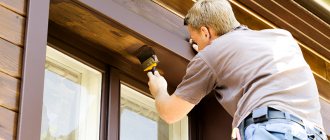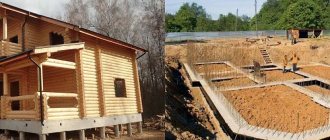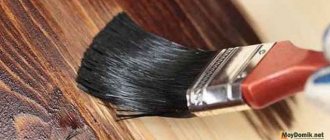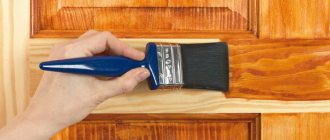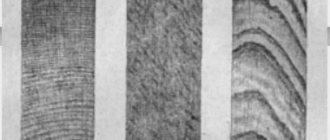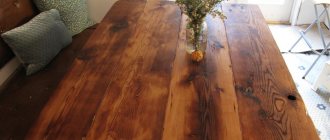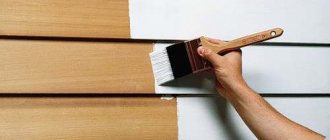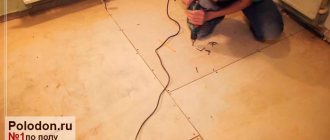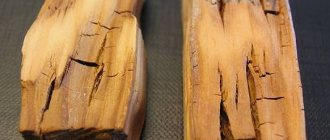Wooden toys are fun for children of all ages. Cubes, mosaics, houses, cars, pyramids, dolls made from natural wood are much more attractive than plastic products. They are durable and environmentally friendly. Paint for children's wooden toys must first of all be of high quality, since children have a habit of putting everything in their mouths, especially babies. The toy should not only be beautiful, but also harmless to the body.
Types of paints
Wooden toys are mainly made from solid linden. Resinous species (pine, larch, etc.) are not suitable for these purposes. Oak and ash are much more expensive. For painting wood, the following types of paints are usually used: oil-based, acrylic, alkyd, and polyurethane paints. Also pay attention to the powder paint. In some cases, after painting, you can detect a sharp chemical smell, which makes you feel dizzy, runny nose, sneezing and lacrimation. Previously, wooden toys for children were not painted at all. They were simply performed in an interesting game version. The beauty of such toys lay in their naturalness. However, children love bright colors. To find out what coloring substance should be used to process the wood of children's equipment, we will conduct a comparative analysis of natural and non-natural paints.
Natural
Toys must be painted taking into account all important parameters. The main list of characteristics of natural paints:
- The composition contains only natural ingredients obtained from plant and fossil sources. Oils, resins, minerals, waxes and pigments are created by nature and intended for safe use.
- The coating forms a single whole with the wooden surface. As a result of treating wood cells with natural oils and resins, a surface that is breathable, water-repellent, and resistant to mechanical damage is obtained.
- They are applied in different ways: brush, spray, dipping, cloth, roller, spatula. Excess is easily removed. Polishing has a special effect, i.e. additional treatment of children's toys with water-based varnish. After applying it, the wooden object acquires special depth and richness, light shine and a noble appearance.
- A wide selection of wood texture options after processing: glossy, matte, various colors.
- The natural coating is completely permeable to water vapor, but impermeable to liquid water, so the paint will not peel off over time.
Note! Natural paints for wooden toys do not contain harmful components that can lead to allergic reactions, poisoning, dizziness and other adverse reactions.
Applying paint with a brush
Unnatural
The use of synthetic coloring compounds is extremely undesirable for children's products. Basic list of characteristics:
- Produced from oil, gas, or coal. After application, the odor has a harmful effect due to its penetrating ability (volatility) and chemical structure that is unnatural for humans. The chemical composition upon contact with the skin has a detrimental effect on the entire body.
- The pores of the wood are closed with a polymer film; neither water vapor nor liquid water penetrates the wood, nor can they be removed without destroying the film.
- The paint is applied using conventional methods. Any inaccuracies can no longer be removed without obvious defects (differences in shade, gloss).
- A modest choice of texture options, as a result of processing the wood takes on a cheap and unnatural look.
- Over time, the top layer peels off, then complete destruction of the wood occurs. During operation, harmful low-molecular substances are released that poison the air in the room.
Peeling off a layer of paint
The purpose of painting wood
Before deciding what composition to coat a wooden surface with, the final goal that they are trying to achieve with this operation is determined. This coloring of a wooden product has several ultimately interrelated results:
- Get a protective coating that extends the life of a wooden part or structure.
- Improve the aesthetic perception of wooden surfaces by emphasizing their internal structural pattern.
- Give an item made with wooden parts an updated appearance.
- Protect the joinery product from the aggression of external environmental influences.
Only after deciding on the purpose of the painting work can you choose how to paint the wood with your own hands.
What varnish should I use?
There are several types of solutions that are successfully used for varnishing wood:
- Varnish that has an oil base;
- Alcohol varnishes;
- Nitrovarnishes.
The oil-based composition forms a very durable film that can reliably protect wooden products. A minor drawback of this type of product is the fact that after it is applied to the surface, the varnish coating becomes slightly darker, the natural shade of wood.
The composition of alcohol products consists of several types of resins and ethyl alcohols. If the goal is to preserve the naturalness of the wood in its original form, then it is necessary to varnish the wood with a composition of this type.
Nitrovarnishes are made from the following components: alkyd resins, solvents, nitrocellulose. It differs from previous substances in its rapid drying process. It is thanks to this quality that experts use them to varnish furniture.
Wood processing
Sanding wood with sandpaper
To ensure that the paint applies evenly to the product and that no flaws appear after some time, the product must be carefully prepared before painting.
The main thing is to completely remove old layers of paint and various contaminants.
It is difficult to do this exclusively with your own hands, so modern methods are used:
- Removers are materials that are applied to old paint, after which it is quickly and easily removed. The composition has a toxic chemical formula, so you need to work with removers delicately.
- Sanding machine - uses a special wood attachment that removes old paint without touching the layers of wood.
- Construction hair dryer - directs a warm stream of air onto the layer being removed, under the influence of which it lags behind the wood.
After cleaning the surface of old compounds, the wood must be cleaned of dust and grease - a classic solvent is used for this - this point is important, and the price of the solvent is not high, so it is better not to neglect this procedure.
Fallen knots and other defects are covered with wood putty. Next, the putty is cleaned off, and the product is again cleaned of dust.
At the last stage, the wood is primed and dried well, and the paint will not lie evenly on the undried product.
Surface preparation
The condition of the surface to be painted dictates the need for its pre-treatment. The following procedures must be carried out:
- Cleaning to remove irregularities, chips, burrs, protruding fibers and similar surface defects.
- Degreasing and removing dust to improve the adhesion of the surface to the applied paint and varnish composition.
- Preliminary application of impregnation in order to give the wood antibacterial, antipyrite (fireproof) and waterproof characteristics.
Grinding
Products made of wood are sanded. An exception may be items that contain wood carvings. Sanding is usually done with sandpaper. It is made with different grain sizes, from coarse to “zero”.
Sanding should only be done along the grain to avoid further damage to the wood. Start with coarse-grained or medium-grained sandpaper. Grinding is done using blocks or blocks, with the help of which the sandpaper is pressed against the surface being treated. It is necessary to gradually move from coarse to fine sanding paper.
Painting technology
Applying varnish to the surface to be treated
Work with each paint composition is carried out differently, so the painting instructions are individual in each case.
Let's consider each option separately:
- Stain - to apply this composition, use a classic brush or swab. Apply at least two layers to the wood. Each layer must dry thoroughly before applying the next one.
Note! When using soluble powdered stain, after dilution, the composition must be filtered through cheesecloth. When using an alcohol-based stain, it is recommended to slightly wet the wood so that the composition adheres better.
- Varnishes - a brush with soft bristles is used for application - with hard bristles, small depressions remain throughout the entire surface to be painted. The product is varnished in several layers with periodic drying.
Note! Just as Zinga conductive paint is used to protect metal from corrosion, alcohol varnishes are used to protect wood from weather conditions.
Cleaning the varnish layer
These varnishes are applied in four layers:
- the first two immediately with drying;
- then sanding is carried out;
- then the third layer is applied and the product is dried for several days;
- The fourth layer is the finishing layer, it evens out and finally tints the product.
- Impregnations and enamels - it is better to use a spray gun for application, but a regular roller will also work. These compounds should be applied according to the recommendations indicated on the packaging.
Note! When working with impregnations outdoors, you should choose a dry, windless day - such compounds are caustic, and in the wind they can get on the skin, which will inevitably cause irritation.
After coating with any compositions, the wood must be protected from external influences until it dries completely.
Decorative painting
Coating the floor with colored paint
Decorative painting includes working with paints and ink:
- Paint – more often, to give wood a more noble look, paints of brown and red shades are used. The paint is applied with a soft brush, roller or spray gun. If, after painting, the original texture of the wood appears through the applied layer, a second layer is laid after the first has dried.
- Mascara – working with mascara begins by diluting the composition with water. If this is not done, the product will become covered with a hard, shiny crust. Application is carried out with a regular brush.
Re-dyeing
Reapplication after correction of defects
If after painting the wood various nuances are noticed (poorly sanded areas, drips, etc.), these defects need to be eliminated. To do this, all areas with flaws are cleaned with fine sandpaper dipped in water. Cleaning should be carried out until the problem areas disappear and their surface becomes dull.
Note! During the cleaning process, you need to regularly change the water - otherwise colored stains will appear.
After the described procedure, the entire product is repainted - you cannot paint only problem areas - the product is completely covered with one solid layer.
